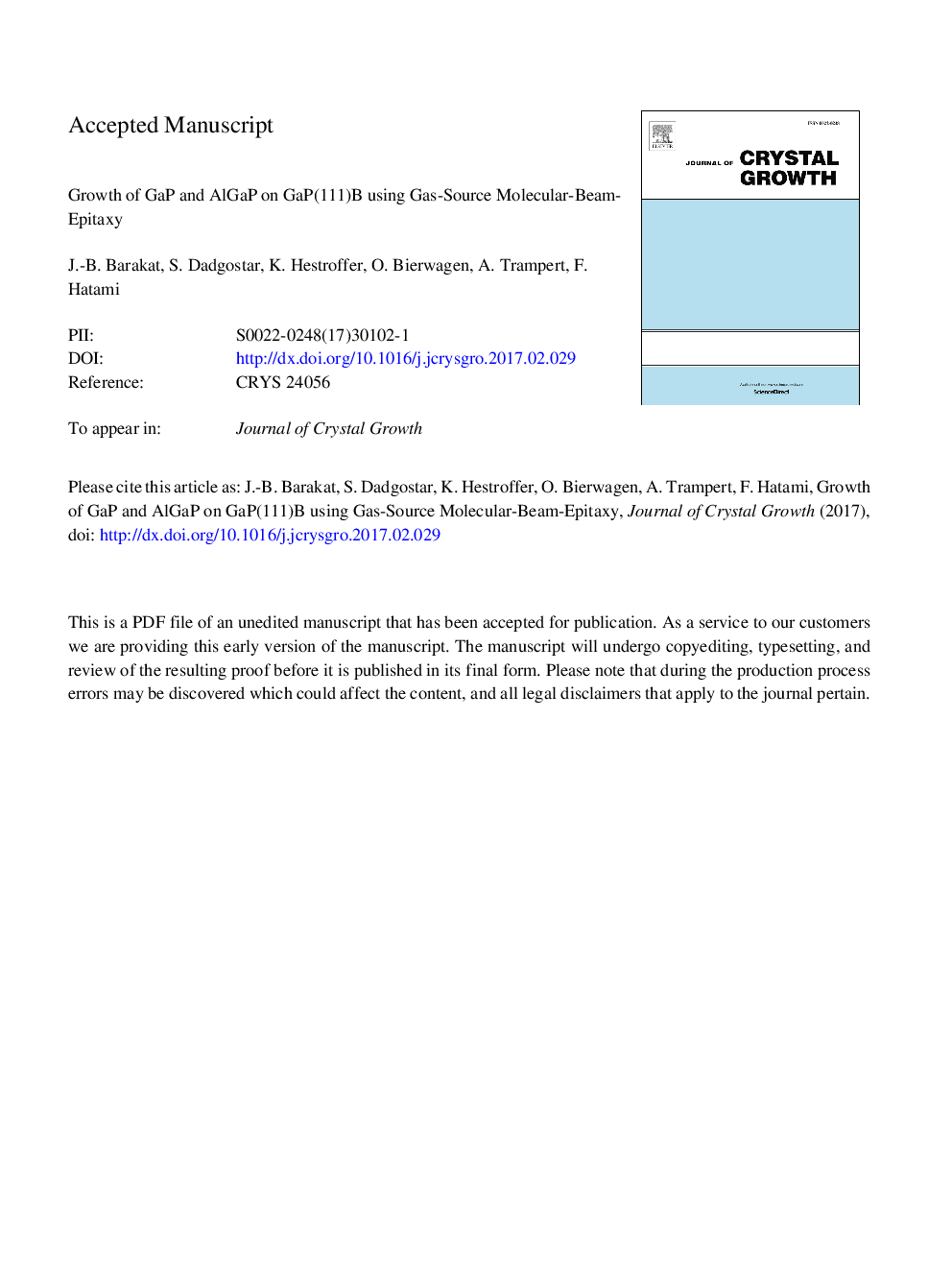| Article ID | Journal | Published Year | Pages | File Type |
|---|---|---|---|---|
| 5489169 | Journal of Crystal Growth | 2017 | 11 Pages |
Abstract
We present an initial study of the influence of the growth parameters on the surface morphology and on the interface quality of homoepitaxial GaP(1 1 1) and heteroepitaxial GaP/AlGaP(1 1 1) grown on GaP(1 1 1)B substrates using Gas-Source Molecular Beam Epitaxy (GSMBE). Three different surface reconstructions are identified in the RHEED patterns during the growth runs. The Root Mean Square (RMS) surface roughness measured post-growth by AFM ranges from 3 to 10 nm over 10 Ã 10 µm2 areas, for a film thickness of 100-600 nm. The results of 2θ-Ï XRD scans on (1 1 1) and (3 1 1) planes reveal a stacking disorder in the AlGaP layer and further XRD phi-scan measurements on GaP (3 1 1) show strong peaks with 3-fold rotational symmetry and additional of 3-fold weak peaks indicating only a negligible fraction of the twinned crystal orientation in the substrate. TEM images of these samples show a smooth interface between the AlGaP layer and GaP substrate, and reveal the presence of a high density of extended defects such as stacking faults, twinning and dislocations lines in AlGaP layer whereas the GaP layer appears as pure Zinc-Blende. Further TEM analysis reveals composition and local strain variations for GaP/AlGaP samples associated with an undulated surface.
Keywords
Related Topics
Physical Sciences and Engineering
Physics and Astronomy
Condensed Matter Physics
Authors
J.-B. Barakat, S. Dadgostar, K. Hestroffer, O. Bierwagen, A. Trampert, F. Hatami,
